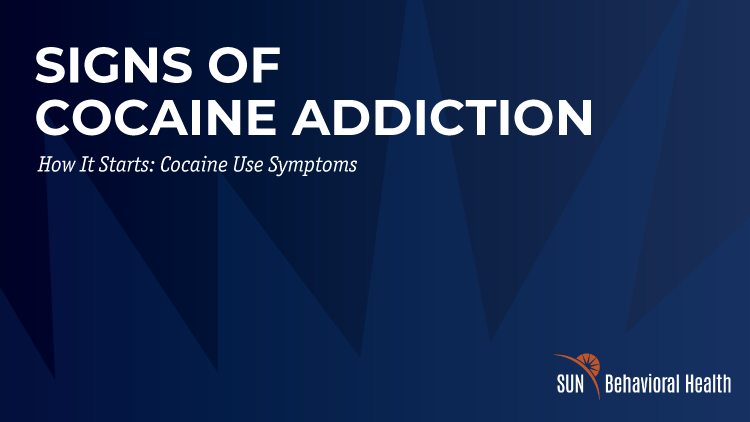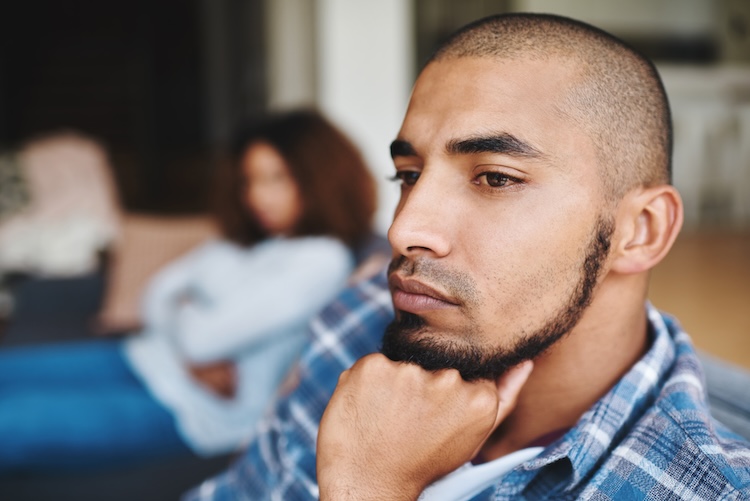Services
- Home
- Mental Health Services
- Who We Treat
- How We Treat
- Patients & Visitors
- About
close

In middle school, you and your best friend used to talk about your dream jobs, and the successful lives you would live once you grew up. Your best friend wanted to be a news anchor, and you always thought she had what it took: an exuberant personality, tenacity, and intelligence. You both got straight A’s through middle school, and then high school.
Over time, however, you watched your best friend obsess over her grades, and crack under the pressure. Halfway through college, everything changed. Her grades declined. She distanced herself from you and started hanging out with other people. She always had allergies or some kind of cold, and even with your strained friendship, would ask to borrow money from you and never pay you back. When you found white powder in a plastic baggy in her backpack one day, everything clicked.
The best friend in the story above is one of the estimated 61,000 people in Houston who use cocaine in a year. The key question: does she have a cocaine use disorder? Signs would indicate yes. We see these symptoms in the people with cocaine use disorder we work with at SUN Houston. We also see them overcome them.
While anyone with cocaine use disorder will benefit from cocaine addiction treatment, they also benefit from compassion. To provide them with either, it’s important to know how cocaine use disorder starts, how it progresses, and what the signs of cocaine addiction look like along the way.
Cocaine addiction doesn’t start randomly. Sometimes, that first instance of cocaine use comes from sheer curiosity about what the “high” is like, but far more often, it comes from a place of pain. Often, it’s a coping mechanism for an unaddressed mental health condition, or a desire to escape from the impact of a traumatic event. Whatever the reason, using cocaine one time doesn’t guarantee a cocaine disorder. It does, however, still present symptoms. With early intervention, cocaine addiction can be prevented.
Cocaine comes with symptoms from the very first use, and if they were all unpleasant, no one would have a cocaine use disorder. Side effects of cocaine use come quickly after snorting, smoking, or injecting it. The “high” of cocaine includes a feeling of happiness and increased energy. With that can come physical signs of cocaine use, most frequently including dilated pupils, sniffling, shaking, nausea, elevated body temperature, runny nose, and sensitivity to light, sound, and touch. The pleasant feelings of cocaine use don’t last for long, and lead to a “crash” quickly. With this can come exhaustion, irritability, headache, and confusion.
People using cocaine will probably be more energetic, and may talk more quickly than usual. They might be restless and have a hard time staying still, and may feel less of a need for food and sleep. Sometimes, people experience mood swings after using cocaine. Repeated use of cocaine can cause someone to develop a cocaine use disorder. People with cocaine use disorders will think about cocaine more and more, and go to further lengths to find it. Their lives slowly grow to revolve around cocaine.
Cocaine’s influence on someone’s social life may seem positive at first. The person using cocaine may make new friends who also use cocaine. Over time, however, these new friends often replace old, more positive friend groups and reinforce cocaine use. The greater a person's cocaine usage, the more the impact on their life becomes obvious.

After the first use of cocaine, it’s a slippery slope. Someone can develop a cocaine use disorder far too quickly, especially if they’ve recently undergone a traumatic event or have unaddressed mental health concerns. Recovery from cocaine use disorder is a journey, but so is the condition itself. There are early symptoms of cocaine addiction, and with more frequent use, other signs appear.
Early cocaine addiction signs include any signs of cocaine use. While using cocaine doesn’t guarantee a cocaine use disorder, it is still where the condition begins.
One of the first cocaine addiction symptoms is tolerance to cocaine. Once someone needs to use more cocaine to achieve the same effect they experienced the first time they used it, they are in a dangerous position and likely to end up in a cycle of increased cocaine use. Additional signs of cocaine use disorder include changes in physical appearance, such as weight loss and lack of hygiene. People with cocaine use disorder are often more emotionally unstable than they were before, with frequent irritability, mood swings, anxiety, and paranoia.
People with cocaine use disorder will also likely begin neglecting their responsibilities. The crashes that come with cocaine can interfere with a person’s ability to start and finish tasks, including work for school or their job, or household chores. People with a developing cocaine use disorder often start missing deadlines, and their performance in most areas of life declines.
They may hang out with new friends, and lose interest in old friends and activities that used to bring them joy. Cocaine is not a cheap habit to keep, so they may start feeling financial strain, which can further impact relationships, especially if the person with cocaine use disorder needs to borrow money, which is common.
Additionally, the person will probably start experiencing withdrawal symptoms when they don’t use cocaine. Withdrawal symptoms include, but aren’t limited to, depression, fatigue, vivid dreams, increased appetite, and restlessness. The person with cocaine use disorder will experience intense cravings for cocaine, not just to cure the withdrawal symptoms, but because cocaine alters the brain.
The feeling of euphoria that comes with cocaine use is due to a cocaine-induced build-up of dopamine in the brain. Dopamine is a neurotransmitter responsible for feelings of pleasure, mood, and reward, among other things such as sleep, cognition, and memory. Over time, the brain copes with this excess of dopamine by reducing its number of dopamine receptors. This causes a tolerance to cocaine. The build-up of dopamine, as well as the frequent activation of the reward system in the brain, also causes the natural activation of the reward system to feel far less pleasurable compared to cocaine. Things that previously brought joy to the person with cocaine disorder will feel dull compared to how they once felt. This makes escaping from cocaine use even more difficult, because if someone uses cocaine to escape from negative feelings, those feelings become even worse than they were before cocaine due to the brain’s changes.
Prolonged cocaine use alters other parts of the brain, too. The structure and function of the brain’s prefrontal cortex, amygdala, and hippocampus change. The prefrontal cortex, responsible for decision-making, judgment, and problem-solving, functions less effectively, causing those with cocaine use disorder to make poor decisions. This includes continuing to use cocaine even when it has significant consequences in their life. The amygdala and hippocampus are responsible for emotional regulation and memory. The changes cocaine causes in these areas can cause mental health conditions such as bipolar disorder, depression, and anxiety, as well as general cognitive dysfunction.
People with cocaine use disorder can also grow more sensitive to cocaine’s negative effects as they develop a tolerance. This can lead to increased anxiety, depression, seizures, and a higher chance of an overdose.
Cocaine addiction also impacts the rest of the body long-term. It can damage the cardiovascular system, causing high blood pressure, increased or irregular heartbeat, and a higher chance of a heart attack. Cocaine can cause ulcers and perforations in the digestive tract, increase the chance of a stroke, cause respiratory problems, and damage the kidneys and liver. The longer a person uses cocaine without treatment, the more likely it is for these health concerns to become permanent.
The social consequences of cocaine use disorder shouldn’t be overlooked, either. Cocaine use disorder can damage relationships, lead to lost jobs and opportunities, and cause significant financial problems.

An unaddressed cocaine disorder sometimes leads to bad decisions that can’t be reversed, relationships that can’t be restored, and damage that can’t be undone. Thankfully, cocaine use disorder is far from a permanent condition, and a wonderful life post-cocaine use is within reach. Recovery isn’t easy, but it’s possible, and it’s worth it.
SUN Behavioral Houston is a mental health center dedicated to helping people heal from substance use disorders and mental health conditions. We are open 24/7, so any time is the perfect time to start your recovery with us. Take the next step in overcoming your cocaine use disorder and call us at 713-796-2273 today.